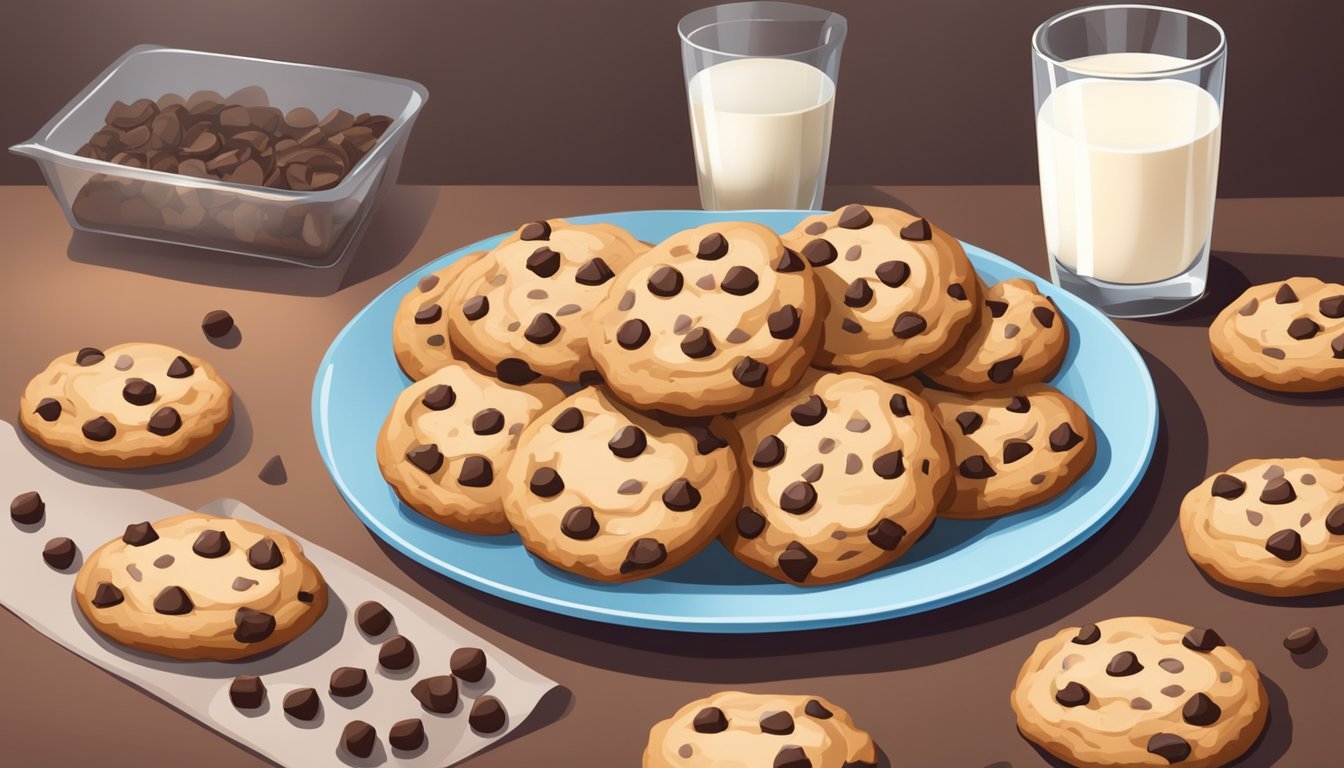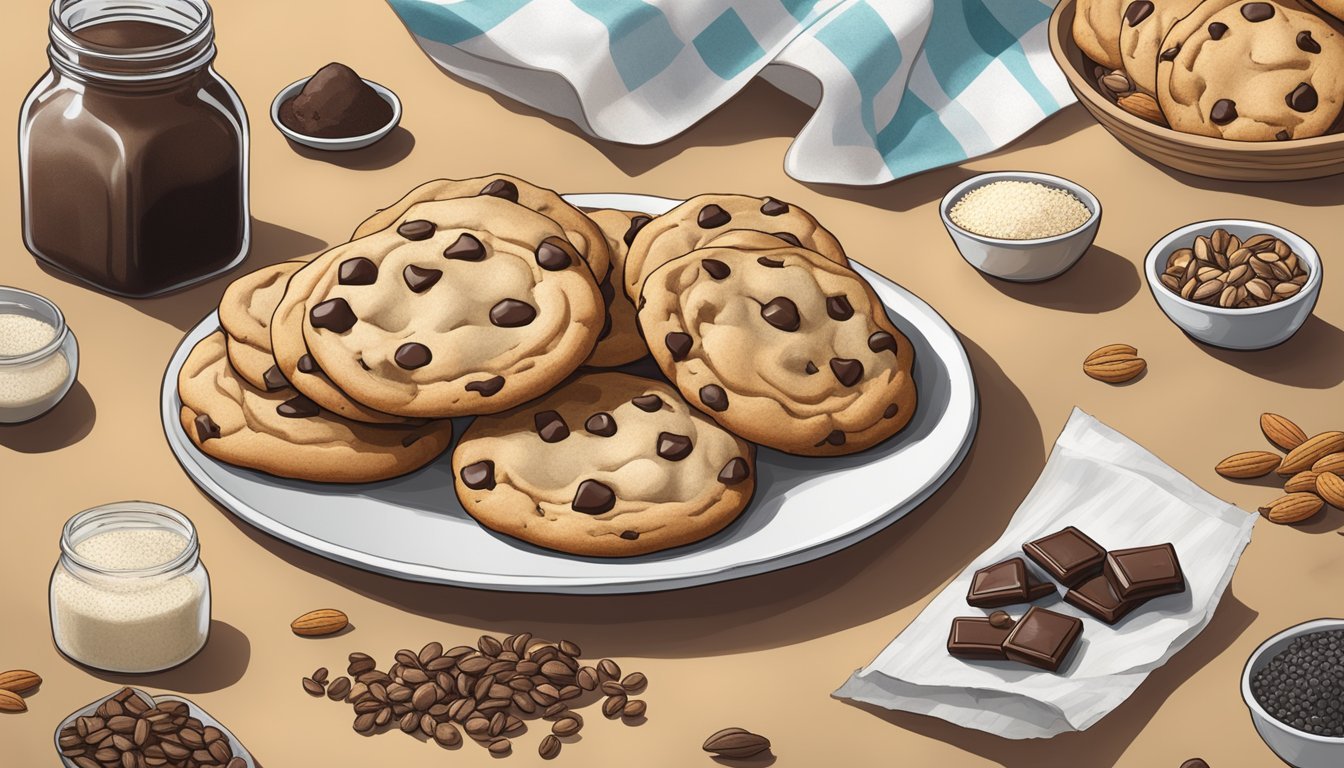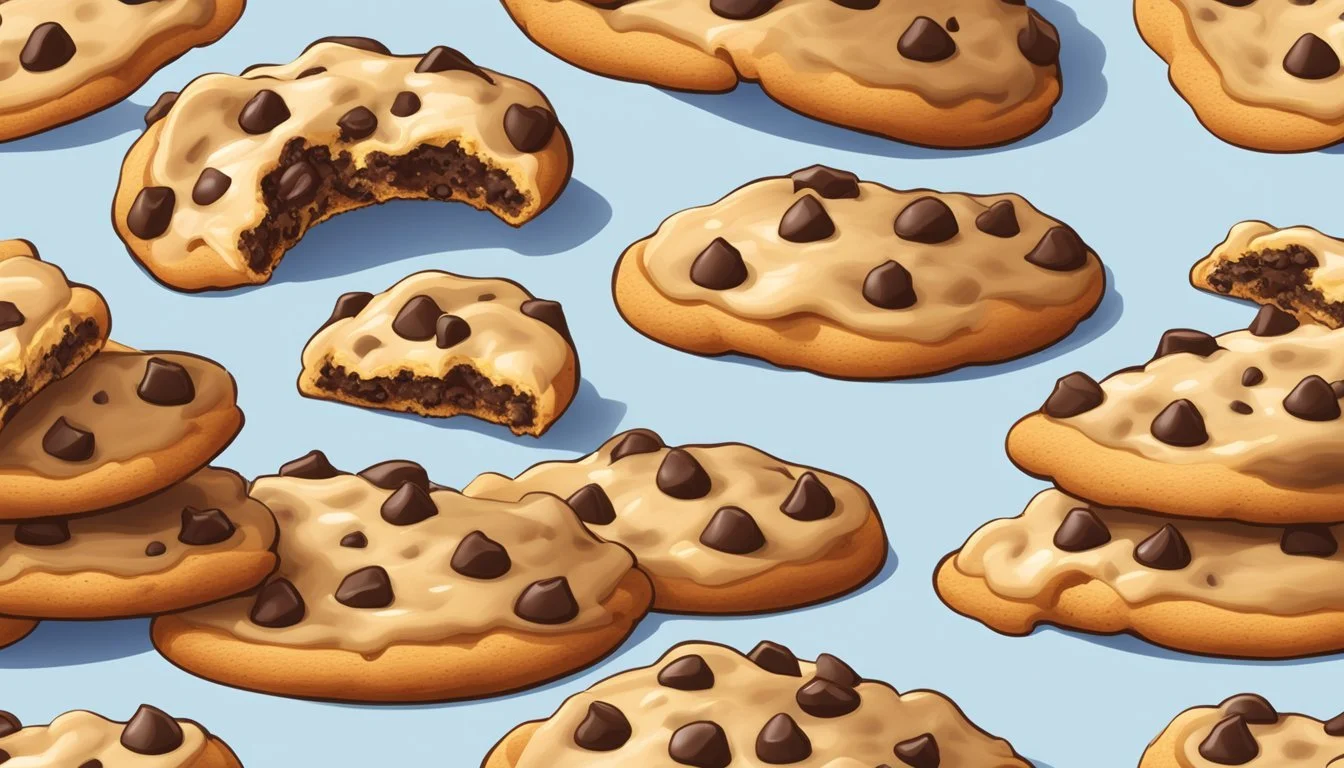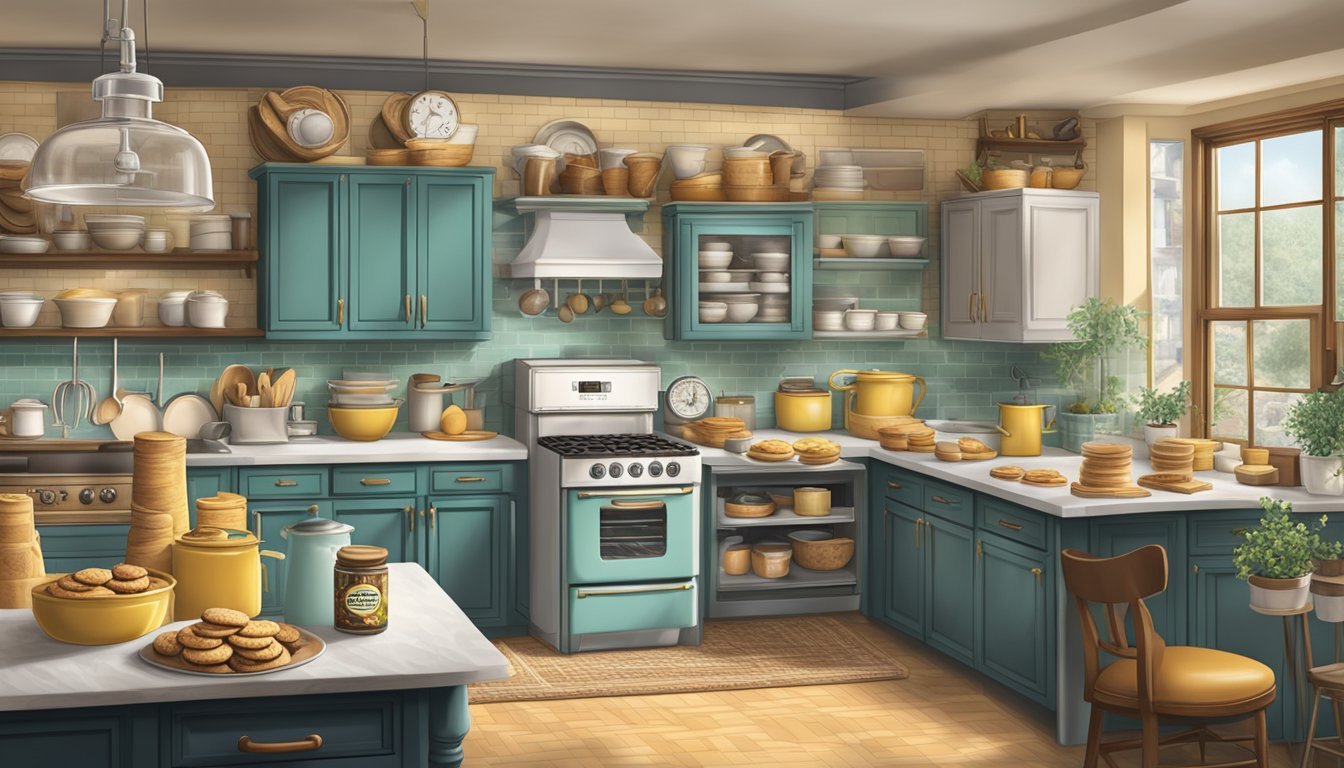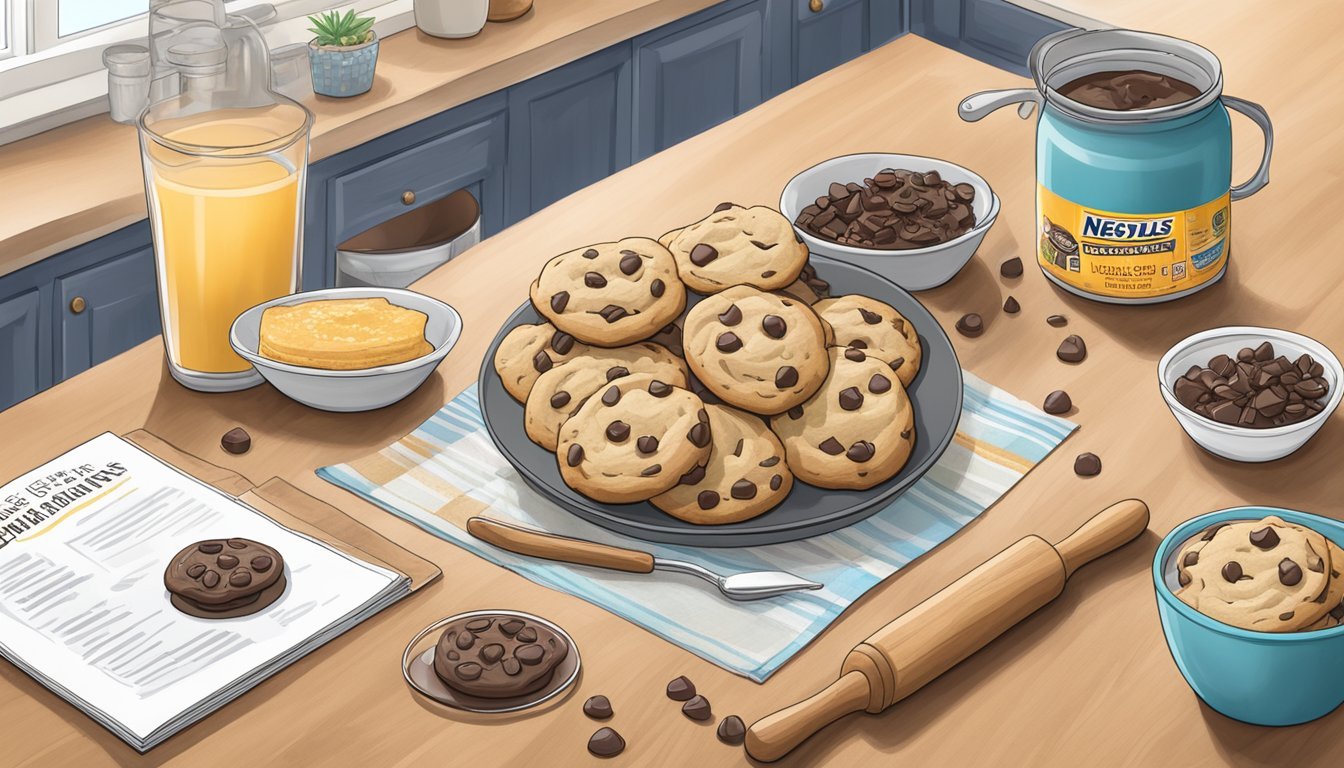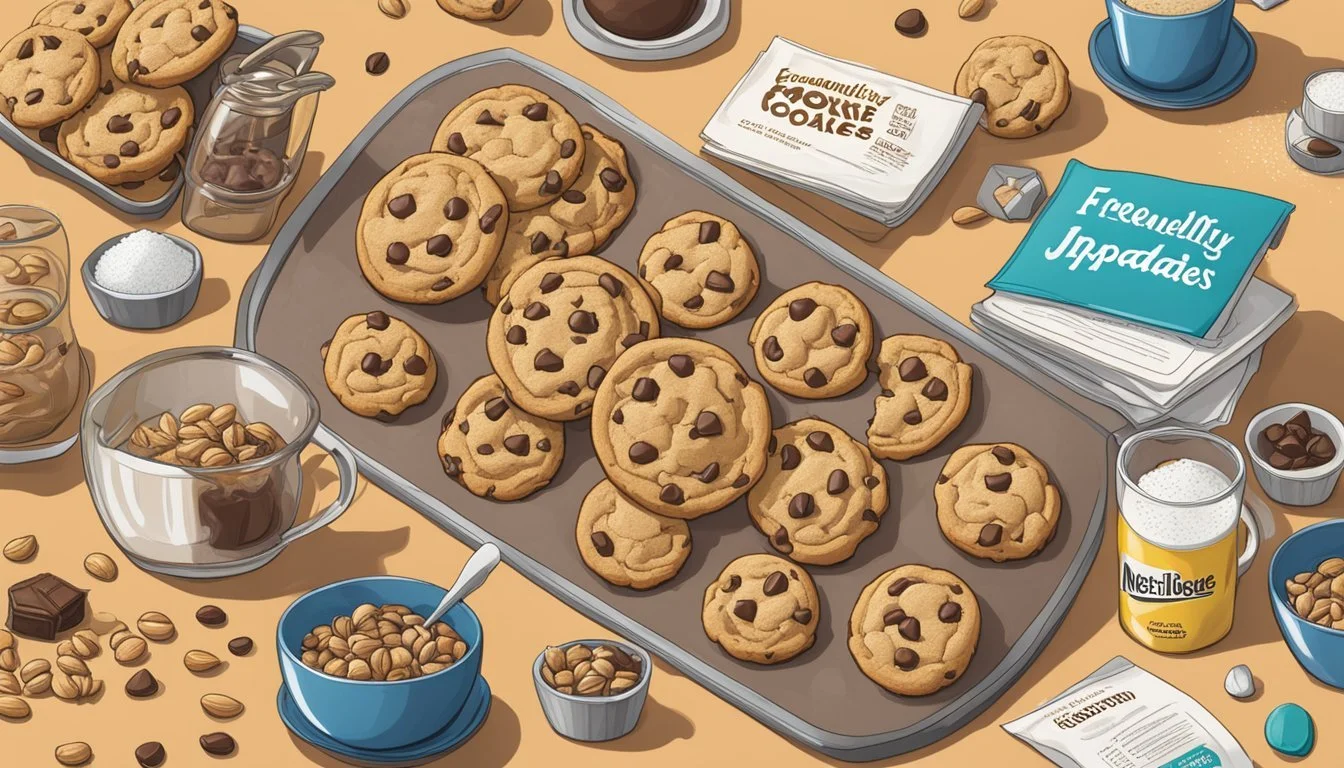Nestlé Toll House Chocolate Chip Cookie Upgrades
Elevate Your Baking Game
The Nestlé Toll House chocolate (What wine goes well with chocolate?) chip cookie is not just a beloved treat; it is a cultural phenomenon. Born out of an unexpected twist of culinary creativity by Ruth Wakefield, the owner of the Toll House Inn in Whitman, Massachusetts, these cookies have maintained their legendary status since the 1930s. As the story goes, Ruth Wakefield chopped up pieces of a Nestlé chocolate bar and added them to her cookie dough, anticipating that they would melt and disperse throughout the cookie. Contrary to her expectations, the chocolate held its shape, giving rise to the classic chocolate chip cookie, captivating millions of palates worldwide.
These cookies, with their perfect blend of sweetness and chocolate, became a hallmark of American households, especially after Nestlé started printing the recipe on its chocolate chip packages. The original Nestlé Toll House chocolate chip cookie recipe remains a treasured formula, giving a taste of nostalgia with every bite. However, even timeless classics have room for innovation. Home bakers and professional chefs alike have been upgrading this iconic recipe for decades, customizing with unique add-ins, flavor tweaks, and cooking techniques that take the beloved Toll House cookie to new heights.
Nestlé Toll House cookies serve as a canvas for an array of imaginative and decadent variations. Whether by altering baking times for different textures, incorporating ingredients like nuts and spices, or using alternate forms of chocolate, each modification offers a fresh perspective on the traditional cookie. Trying these upgrades can transform a simple batch of Toll House chocolate chip cookies into a tailor-made dessert that still pays homage to Ruth Wakefield’s original creation.
The Basics of Baking Cookies
Baking cookies involves a balance of the right ingredients and techniques to achieve the desired texture, from chewy and soft to crispy and thin. Understanding the components and proper steps is crucial to making delicious Nestlé Toll House Chocolate Chip Cookies.
Key Ingredients
Flour: All-purpose flour provides structure.
Leaveners: Baking soda helps cookies rise.
Salt: Enhances flavor.
Fats: Softened or salted butter contributes to texture.
Sugars: Brown sugar and granulated sugar lend sweetness and affect texture.
Eggs: Bind the ingredients.
Vanilla Extract: Adds flavor.
Preparation Techniques
Preheating: Always preheat the oven to the specified temperature; commonly, recipes call for 375° F.
Creaming: Beat softened butter and both sugars until creamy.
Mixing: Add eggs one at a time, then vanilla, and gradually mix in the dry ingredients.
Scooping: Use a spoon to drop dough onto ungreased or parchment paper-lined baking sheets.
Baking Concepts
Uniformity: Cookies should be the same size for even baking.
Spacing: Leave enough space between dough balls on the baking sheet.
Temperature: Follow recipe guidelines, typically baking at 375° F.
Timing: Check for doneness according to the recipe, often 8 to 10 minutes.
Serving and Storing
Cooling: Let cookies cool on the cookie sheet or wire racks.
Airtight Storage: Store in an airtight container to maintain texture.
Freezing: Freeze cookie dough or baked cookies for later use.
High Altitude Adjustments
Flour: Increase flour for more structure, up to 2½ cups at 5,200 feet.
Liquids: Add extra water to counteract dryness.
Sugars: Reduce both sugars slightly to prevent over-spreading.
Temperature: Baking temperatures may vary; adjustments are sometimes needed.
Nutritional Information
Calories: Vary per cookie depending on size.
Fats: Mostly from butter.
Sugars: Both granulated and brown sugars contribute to calorie count.
By adhering to these specifics, one can confidently bake cookies that cater to individual preferences, whether one seeks a chewy, thick bite or a crispy, thin snack. For those at high altitudes, tweaking the basic recipe ensures their cookies come out perfectly at any elevation.
Flavor Enhancements
To elevate the classic Nestlé Toll House chocolate chip cookie, one can experiment with a variety of flavorful twists. Incorporating different chocolates, substituting ingredients, and incorporating unique extracts and spices can transform the original recipe into a gourmet experience.
Chocolate Varieties
Semi-Sweet Chocolate Morsels: The traditional choice, Nestlé Toll House Semi-Sweet Chocolate Morsels, brings a rich and balanced flavor.
Milk Chocolate Chips: A sweeter alternative that can provide a creamier taste.
Dark Chocolate: For a more intense chocolate flavor with less sweetness.
Integrating different sizes and types of chocolate, such as chunks or shavings, can also introduce new textures.
Add-ins and Substitutions
Adding or substituting ingredients opens new dimensions of taste and texture.
Nuts: Chopped walnuts or pecans add a satisfying crunch.
Toffee: Toffee bits bring a buttery and slightly salty dimension.
One can also consider replacing some all-purpose flour with alternatives like almond flour for a nuttier profile.
Extracts and Spices
Incorporating different extracts and spices can subtly or dramatically change the flavor.
Vanilla Extract: An essential component, high-quality vanilla extract enhances sweetness and complexity.
Almond Extract: Just a hint can inject a note of warmth and aroma.
Spices like cinnamon or nutmeg can be added for a warm spice undertone.
Sweetener Variations
Different sugars can alter the depth and moisture of the cookies.
Brown Sugar: Provides moisture and a deep, caramel-like flavor.
White Sugar: Contributes to a crisper texture.
A combination of both sugars is standard, but the ratios can be adjusted to taste.
Flour Alternatives
Flour plays a major role in texture and structure.
All-Purpose Flour: The standard base for a chewy and soft cookie.
Bread Flour: Can be used for a chewier texture due to higher protein content.
Blending flours can result in a tailored texture, combining chewiness with tenderness.
Texture and Appearance
When baking Nestlé Toll House Chocolate Chip Cookies, the texture and appearance are crucial for creating the best cookies. One aims for a chewy center with a crispy edge, striving for that amazing bite each time. The variations in thickness can also greatly affect the outcome, with each trait appealing to different preferences.
Achieving the Perfect Chewiness
To ensure cookies have that sought-after chewy center, bakers should use brown sugar in the cookie dough mixture since it retains more moisture than white sugar. Additionally, underbaking cookies slighty leave them with a soft, chewy texture. Pulling cookies out of the oven when they're still a bit underdone allows them to finish cooking on the baking sheet while cooling down.
Creating a Crispy Edge
For Nestlé Toll House cookies with a crispy edge, one must consider both the baking time and temperature. Baking at a higher temperature, such as 375°F (as stated in some recipes), can contribute to a crispier edge by setting the edges faster while leaving the center slightly undercooked for chewiness. However, monitor closely to prevent overbaking.
Thick vs. Thin Cookies
The thickness of Toll House cookies affects their final texture:
Thick cookies: To achieve thicker cookies with a soft center, one can chill the dough before baking which prevents excessive spreading.
Thin cookies: A higher butter content and warmer dough temperature enhance spreading, resulting in thinner, crisper cookies upon cooling.
One's preference for thick or thin will guide the tweaks made to the cookie dough preparation.
Innovative Cookie Forms
Nestlé Toll House chocolate chip cookies have been a cherished classic for decades. Adapting the traditional recipe into new forms not only makes for an exciting dessert lineup but also can offer convenience and versatility to satisfy any sweet tooth.
Bar Cookies and Bites
The conventional drop cookie transitions effortlessly into bar cookies. One simply spreads the cookie dough in a baking pan, resulting in a treat that's just as delightful but even easier to make. The chocolate chip cookie bars emerge with a slightly different texture—soft in the center with caramelized edges. For bite-sized enjoyment, one can cut bar cookies into small squares, perfect for lunchboxes or on-the-go snacking.
Advantages:
Less preparation time.
Easy to serve and portion.
Cookie Dough Innovations
Adventurous bakers can amplify their dessert experience by experimenting with freeze cookie dough. One can shape dough into logs for slice and bake cookies, which streamlines the baking process and allows for fresh cookies on demand. This technique also facilitates storage and longevity, ensuring that a warm, amazing cookie is never far from reach.
Storage Tips:
Wrap dough logs tightly in plastic wrap.
Label with date and type for convenience.
Cookie Variations
Switching up ingredients in the Nestlé Toll House chocolate chip cookie recipe can lead to a plethora of cookie variations. For example, replacing some of the flour with oats transforms the chocolate chip cookie into a chewy, hearty oatmeal chocolate chip cookie. These modifications cater to an array of palates and can enhance the nutritional profile of the dessert. Such creativity honors the legacy of the classic cookie while revitalizing it for contemporary tastes.
Ingredient Swaps:
Incorporate oats or nuts.
Historical Context
The storied past of the Nestlé Toll House Chocolate Chip Cookie is closely intertwined with the tale of the Toll House Inn and its proprietors. It’s a narrative marked by creativity, convenience, and an enduring culinary impact.
Origins and Evolution
In the early 1930s, Ruth and Kenneth Wakefield opened the Toll House Restaurant in Whitman, Massachusetts. This establishment would later become renowned for the accidental birth of the original chocolate chip cookie. Legend suggests Ruth modified her cookie recipe during a shortage of baking chocolate; she chopped up a bar of Nestlé semi-sweet chocolate, anticipating it would melt and disperse through the cookie dough. Instead, the chocolate held its shape, thus creating the beloved chocolate chip texture. Recognizing the cookie's potential, Nestlé and Wakefield struck a deal: her recipe would appear on the chocolate bar’s packaging in exchange for a lifetime supply of chocolate.
1930: The Wakefields open the Toll House Inn.
1938: Ruth Wakefield invents the original chocolate chip cookie.
Licensing Deal: Wakefield and Nestlé come to an agreement.
Cultural Impact
The Toll House cookie advanced from a local favorite to a national sensation, contributing significantly to America's baking culture. The simplicity of making these cookies allowed them to gain traction in American households, especially during WWII, where soldiers from Massachusetts shared their care packages from back home, spreading the cookie’s fame. The recipe fostered a sense of nostalgia, leading to the celebration of National Chocolate Chip Cookie Day. Over time, the term 'Toll House' has become synonymous with these cookies, further cemented by Nestlé Toll House branded products, keeping the story alive and underlining the cookie's status as a quintessential American treat.
Wartime Popularity: Toll House cookies gain national fame during WWII.
Nostalgia: The cookie becomes a nostalgic symbol.
National Chocolate Chip Cookie Day: A testament to the cookie's cultural significance.
Advanced Baking Tips
In pursuit of the perfect batch of Nestlé Toll House chocolate chip cookies, one must attend to the nuances of baking techniques and storage methods. This section discloses methods to master the baking process, preserve the cookies' texture and flavor, and ways to engage with other bakers for continued improvement.
Mastering Cookie Baking
Improving the classic Toll House cookie recipe lies in the precision of modifications. Reducing granulated sugar to ½ cup and increasing brown sugar to 1 cup can yield a moist, chewy center. Additionally, an adjustment to the leavening agents by reducing baking soda to ½ teaspoon and incorporating ½ teaspoon of baking powder helps in achieving an ideal rise and texture, especially important in high altitude baking.
Preservation Techniques
Once baked, storing chocolate chip cookies to maintain their nostalgic appeal requires careful technique. Cookies should be stored in an airtight container to retain moisture. For long-term storage, freezing the cookies can preserve their flavor and texture; place them in a single layer on a baking sheet to freeze before transferring to a container or freezer bag to prevent them from sticking together.
Competition and Collaboration
Participating in a bake-off can be a sterling opportunity to refine one's Toll House cookie recipe. Engaging with other bakers fosters a competitive yet collaborative environment, where sharing recipe tips can lead to collective advancements in cookie-crafting.
Leverage Online Resources
Bakers are encouraged to utilize online resources for additional insights. Websites dedicated to baking offer a plethora of tips, such as altering recipes for chewier or crisper textures and troubleshooting common baking mishaps. Exploring these resources can help bakers stay abreast of innovative twists on the revered Toll House cookie recipe.
Frequently Asked Questions
This section addresses common inquiries about preparing Nestlé Toll House Chocolate Chip Cookies, offering solutions for ingredient swaps and baking troubles, ensuring a delightful cookie-making experience.
Recipe Queries
How does one make the best Nestlé Toll House cookies? They should closely follow the classic Nestlé Toll House cookie recipe, measuring ingredients accurately. Begin by preheating the oven to 375°F. Cream together the right amounts of butter, granulated sugar, and brown sugar. Blend in eggs one at a time, then mix in the vanilla extract. Whisk together flour, baking soda, and salt separately and gradually blend into the sugar and butter mixture. Fold in chocolate chips and optionally, nuts. Drop rounded tablespoons onto an ungreased baking sheet and bake for 9-11 minutes until golden brown.
Which baking sheet should be used? Use an ungreased baking sheet, ensuring enough space between each dollop of cookie dough for optimal results.
Ingredient Substitutions
Can one substitute the types of sugar used in the recipe? Yes, substituting sugars can affect the texture and flavor. Brown sugar contributes to the cookie's moisture and richness, while granulated sugar helps in spreading and crisping. For a subtle change, one might try using light brown sugar instead of dark brown to adjust the molasses flavor.
Are there alternatives to using butter in the recipe? Although butter is preferred for its flavor and texture, one can use margarine or shortening. Note that these substitutions can alter the texture and taste of the cookies.
What if someone doesn't have chocolate chips? Chocolate chips are central, but one might replace them with chocolate chunks or chopped chocolate bars of similar quality. The size and distribution of chocolate will differ, but the cookies will still be indulgent.
Troubleshooting
What if the cookies spread too much or not enough? Excessive spreading could indicate the butter was too warm or the batter was overmixed. If the cookies don't spread, the dough might have been too chilled or contained too much flour. Adjustments should be made accordingly in the next batch.
Why are the cookies coming out too crisp or too soft? Overbaking can lead to crisp cookies, so they should be removed from the oven when the edges are just turning brown. For softer cookies, they might try reducing the baking time by a minute or two. Oven calibration is also key; one should ensure it's heated to the proper temperature for the best chocolate chip cookies.
Conclusion
The journey of enhancing the iconic Nestlé Toll House cookies has melded tradition with innovation. One reflects on the time-honored qualities that make the classic chocolate chip cookie a comfort food staple, while also recognizing the value of a personal touch.
Those seeking to refresh the familiar taste of Nestlé Toll House classics can do so confidently, with the knowledge that even small changes can have a delightful impact. It's about maintaining the integrity of the classic chocolate chip cookie while exploring creative avenues.
Substitutions and Additions:
Nuts: A variety of nuts can be folded into the batter for added texture and flavor.
Spices: Introducing spices like cinnamon can subtly enhance the flavor profile.
Chocolate: Utilizing different types or shapes of chocolate can alter the melt and distribution in each bite.
With the guidance provided, one can become knowledgeable in the art of cookie customization. By employing a clear and neutral approach, exploring this culinary canvas becomes not just an exercise in baking, but an experience in creativity. Each batch baked invites the opportunity to further refine one's skills and preferences, ensuring that the next is better than the last.
In essence, the wander into the realm of Nestlé Toll House cookie upgrades converges the comfort of the familiar with the excitement of the new, equipping the baker with the tools to leave a personal imprint on a timeless classic.

